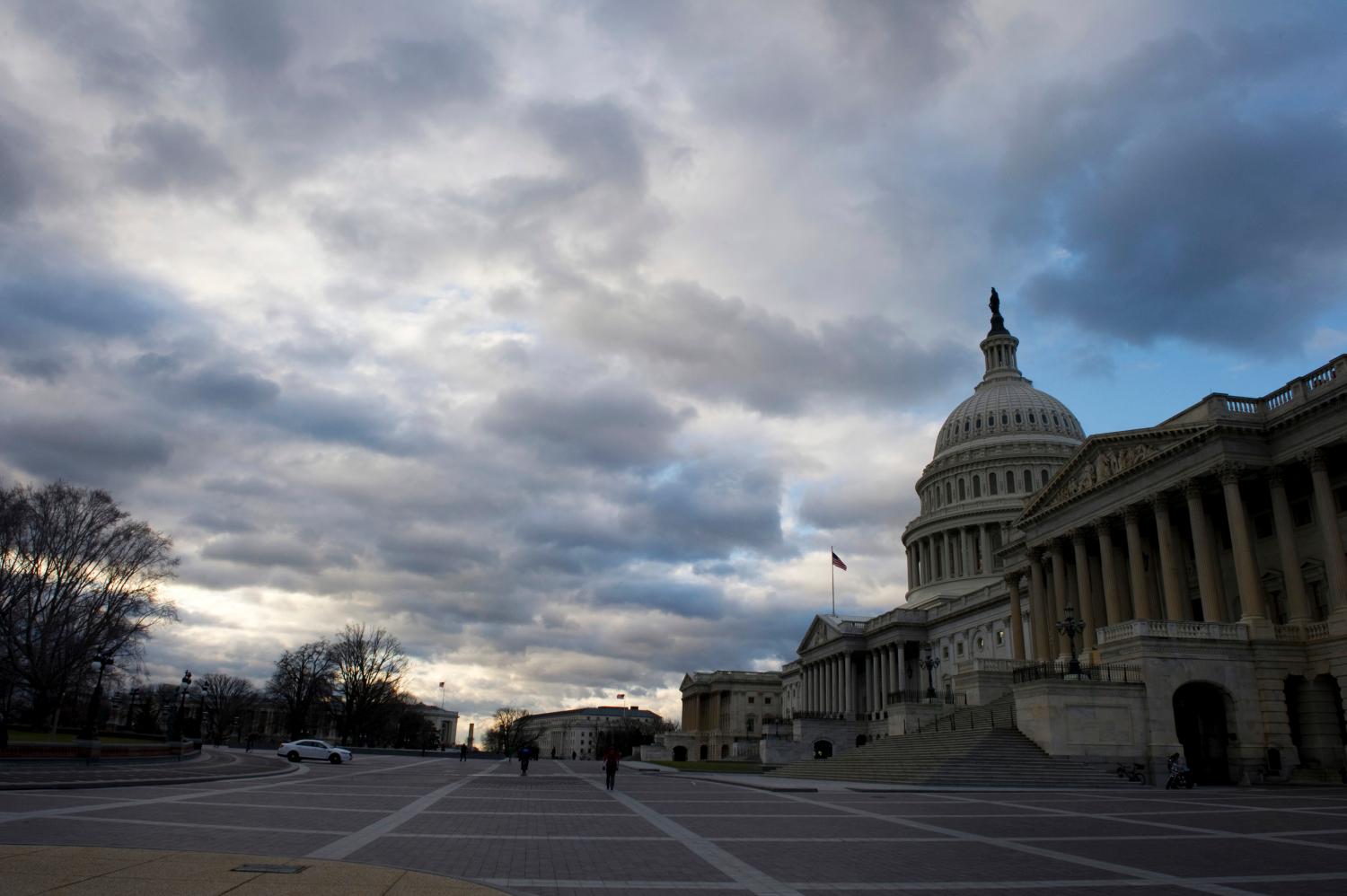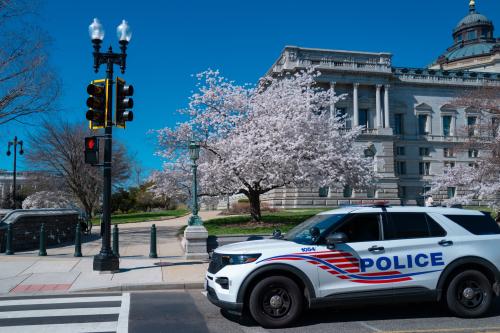While policymakers now debate, at long last, reforms in our nation’s public housing program, a serious financial crisis looms in a federal program subsidizing the rents of more than 1 million low-income American families living in privately owned housing. This time bomb has so far been largely ignored by the Congress, and even to a significant extent by the media, reminiscent of a pattern that characterized and ultimately exacerbated the S&L crisis. As in the case of cleaning up the S&L mess, the earlier this housing problem is addressed, the less costly its resolution will be for American taxpayers and the less disruptive it will be for the low-income Americans who are tenants in these projects.
POLICY BRIEF #1
Some analysts have called our nation’s public housing program the last bastion of Socialism in an otherwise free market system. The 1.4 million families and elderly households living in public housing are chosen bureaucratically, allowed to pay subsidized rents, and told they must stay in the same units in order to receive the subsidy. Bills recently passed by both the Senate and the House would deregulate 3,400 local housing authorities that administer public housing. Shortly before he announced his resignation from the Senate, Majority Leader Robert Dole, echoing a proposal made last year by the Department of Housing and Urban Development (HUD) Secretary Henry Cisneros, said he would go even further to “end public housing as we know it” by giving all public housing residents vouchers to enable them to move freely wherever they choose. In the meantime, HUD has made the demolition of troubled public housing projects one of its highest priorities and expects to have brought down 30,000 units around the country by the end of this year.
Yet while Congress is now focused on finding ways to dramatically reform public housing, it has so far ignored a potential disaster in our nation’s federally assisted private housing stock. Over the next seven years, subsidy contracts will expire on more than 700,000 units in apartment buildings (housing more than 1 million tenants) located throughout the nation that receive rental assistance under HUD’s “Section 8” (and predecessor) programs. The mortgages on these buildings also are insured by the Federal Housing Administration (FHA), a part of HUD, which means that if owners default, FHA is obligated to pay insurance claims to the private lenders. The resulting losses add to the federal deficit.
In today’s tight budgetary environment, however, there is no prospect that these contracts will be renewed at their current subsidy levels. The impending result is all too obvious: many owners of these buildings will default on their mortgages, with the federal government obligated to pay unnecessarily large insurance claims on $18 billion in outstanding mortgages. Moreover, hundreds of thousands of families who live in the buildings experiencing defaults could find their lives disrupted as owners defer maintenance or shut down the properties.
The impending disaster in the Section 8 program is even more predictable than the savings and loan fiasco. In the case of S&Ls, most of which were insolvent in the early 1980s, there was at least faint hope among some at the time that the institutions could “grow their way” out of insolvency or that a decline in interest rates would bail them out (but this didn’t happen). In sharp contrast, Section 8 mortgage defaults are a certainty; the only silver linings in the black cloud are that this problem will only gradually deteriorate as the rental assistance contracts expire and that the total bill for the mess will hardly approach the $150 billion price tag of the S&L debacle.
But this is surely no excuse for ignoring the problem. To its credit, the Clinton administration over two successive years has called attention to the matter and twice proposed reforms. Its most recent estimates are that an aggressive strategy of reform of the subsidy contracts and restructuring of the mortgages would, in the long run, save almost $5 billion in today’s dollars (discounting future savings back to today).
Congress has yet to act, however. This Brief suggests ways to head off the impending Section 8 disaster, while explaining the reasons so little action has been taken thus far.
The Section 8 Program: A Quick Primer
The Section 8 Housing Assistance Payments Program was launched during the Nixon administration, and like many government programs, with good intentions: to provide private developers greater incentives to build housing for low-income Americans by giving them rental subsidies tied to the units they built (“project-based” subsidies). Section 8 expanded and streamlined earlier project-based subsidy programs administered by HUD. These subsidies were provided by contracts with the owners, typically for 20 years. Moreover, FHA guaranteed the mortgages that owners would obtain from banks or thrifts, while owners received substantial tax benefits when constructing the buildings.
The Section 8 program was popular because it fostered the construction of housing for more than 1 million low-income Americans (generally those earning less than 80 percent of the median family income in their local areas). But there was also something of a “Ponzi scheme” element to the program that kept it going: FHA could avoid making payments on its mortgage guarantees only as long as the subsidies under the Section 8 contracts continued. If the subsidies were cut, the scheme would collapse. The owners might then default on their mortgages, and the FHA would be left to pay claims (just as the deposit insurance funds have had to honor the claims of depositors at failed banks and savings and loans). Policymakers acknowledged this flaw in 1983, and HUD stopped entering into new Section 8 contracts with owners. In the meantime, HUD had begun giving assistance instead directly to tenants in the form of portable vouchers. This reform provided more choice for tenants while lowering the per person cost of housing assistance (so that the same funds could help more families).
But what happened to all those properties subsidized with project-based subsidies prior to 1983? When properties were new, most provided excellent quality housing, albeit often at an excessive cost per unit. Even today, most Section 8 projects provide decent housing. But, as the pre-1983 projects aged, an increasing number began to experience financial and operating problems. For years, HUD and the Congress kept the Ponzi-like scheme going by layering on additional subsidies when projects got into financial trouble.
This situation couldn’t last and it won’t. Fundamental problems with the two different classes of subsidized units explain why.
First, roughly two-thirds of the properties, almost all constructed after 1974, are now over-subsidized—that is, they receive federal subsidies based on rents above those on comparable nonsubsidized units in the same neighborhood. Indeed, more than 40 percent of the properties have assisted rents exceeding 120 percent of average market rents in their locations. The General Accounting Office even cites examples of Section 8 apartments renting for twice as much as nonsubsidized apartments across the street. A case in point is an apartment complex in Casper, Wyoming, where two-bedroom apartments are subsidized under the HUD contract for those units by $880 a month. In the same city, larger apartments with more amenities rent for as low as $425 a month. The situation is made even more absurd by the fact that some tenants would like to leave the complex—for more satisfactory housing and at lower cost to the government—but cannot because their rental assistance is tied to staying in their current units.
Even if the original subsidies had been in line with market rents, as additional subsidies were added, the costs became excessive. Given the competing claims on scarce appropriations, it no longer makes sense to pay these owners more than they would get in a free and competitive market. The only reason this policy has continued is that until recently, both the Congress and successive administrations feared that many owners would be forced to default on their mortgages if their subsidies were capped at market-level rents.
Second, owners who signed subsidy contracts with HUD before 1974 often were under-subsidized—the rents and subsidies they collect are below free market levels (68 percent of these older units compared with 10 percent of the newer units, according to a recent survey by Ernst & Young Kenneth Leventhal). Owners of the under-subsidized properties accordingly have limited ability and incentive to maintain them in good shape, so many simply let them deteriorate. Indeed, more than 80 percent of these properties have deferred maintenance and capital needs of more than $5,000 per unit. Yet much of this housing could still serve lower-income families if the incentive structure were changed quickly. Other projects are crime-ridden, poorly located or constructed, and perhaps no longer viable. But no matter how bad the living conditions, tenants in these projects are effectively trapped by current rules linking rental subsidies to particular buildings.
In 1996, Congress displayed signs of grappling with the first problem—the over-subsidized units—by permitting HUD to renew expiring contracts only for one year at their current rents. But it has done nothing to address the continued deterioration of the under-subsidized units. Nor has it come close to grappling with overall budgetary constraints that could lead to the collapse of the Section 8 program and a wave of mortgage defaults.
Some have argued that the current system works fairly well and only needs some fine-tuning to lower costs. This optimistic view ignores the system’s fundamental flaws. The interlocking subsidies of mortgage insurance and rental assistance insulate properties from beneficial market forces. The current system also encourages costs to escalate because as long as the rental assistance is tied to specific units, HUD cannot walk away from the properties and thus must absorb any cost increases. In effect, the system creates two hostages: tenants to their units and the federal government to keeping the system afloat.
Efforts to control subsidy costs through better enforcement or tighter funding formulas will fail to eliminate all inefficiencies because they require a continued bureaucratic structure to administer the program. Market rent levels, which send the proper signals to owners and tenants, can only be achieved through competition, not by government fiat.
The Administration’s Initial Reform Attempt
HUD recognized all this in late 1994, proposing early the following year that expiring Section 8 contracts not be renewed and that lower-income residents get portable housing vouchers instead. Landlords would then be free to rent their units for whatever the market would bear. To assist property owners in this transition, FHA would “mark the mortgages to market”—writing down the mortgages in those cases where market rents could not cover operating costs and mortgage payments without Section 8 subsidies. FHA would take the “hit,” paying out claims. But HUD argued it could save taxpayers money if it were authorized to negotiate these markdowns with the owners well before their subsidy contracts expired rather than to wait until the mortgages defaulted after the subsidies were renewed at lower levels. Foreclosures not only waste money on legal expenses, but owners with no remaining equity interest have no incentives to minimize expenses. This causes property values to decline, requiring FHA (as the insurer) to take much larger losses.
The administration’s arguments didn’t fly with Congress, for several reasons. For one thing, key congressional leaders on the housing committees (and their staffs) didn’t trust HUD’s numbers, particularly the savings estimates, which seemed to change every several weeks.
Perhaps more important, HUD struck out with the two constituencies who would have been most affected by what then came to be known as the “Mark-to-Market” proposal: the owners of the projects and representatives of tenant groups. Some owners feared that HUD wouldn’t treat them fairly in the renegotiation process, while the markdowns themselves would trigger a tax liability (because debt forgiveness is customarily treated as a taxable capital gain). Meanwhile, some tenants’ organizations have long been skeptical of housing vouchers, fearing that many residents, especially minorities, the elderly, the handicapped, and those with large families, would be unable to obtain suitable housing in other buildings. This skepticism remains despite evidence from HUD studies showing that more than 80 percent of voucher recipients find suitable housing and assurances from HUD that it would permit elderly and handicapped families in particular to remain in their units under any voucher plan.
Finally, although the predicted mortgage defaults were certain to happen as long as Congress froze the total amount of Section 8 subsidies, there seemed to be little immediacy to addressing the problem. Because the high-cost Section 8 contracts expiring in 1996 covered fewer than 1,000 units, it was easy to ignore the problem for another year. Actually, Congress didn’t totally pass the buck: It renewed the high-cost subsidies only for one year, while it gave HUD authority to “demonstrate” the benefits of restructuring the program on 15,000 units. But this demonstration expires at the end of September 1997, and thus leaves more than 700,000 units awaiting action 236,000 units expiring in 1997.
1996: The Administration Tries Again
Rather than butt its head against a congressional wall, HUD and the administration have tried this year to persuade Congress to adopt a different, scaled-down approach to addressing the impending Section 8 disaster. The new approach was crafted in an effort to avoid some of the objections made by the affected constituencies.
The specific proposal is called “Portfolio Reengineering” and, beyond the name change, differs from the original one in the following important respects:
- The new proposal would reduce excessively generous rents to market levels and, in many instances, make future subsidies portable—thereby giving tenants more choice. Meanwhile, HUD would gain negotiating authority with respect to the mortgages on the over-subsidized properties (where rents exceed market levels). This would save the government money on subsidy payments. But it also leaves in place the disincentives for investment in the older properties, which will make up the bulk of the Section 8 contract expirations over the next three years (and comprise about half of the overall total).
- The new proposal would give state and local governments a say in the decision whether, and at what pace, assistance now tied to individual properties should be converted to portable vouchers. Involving lower levels of government and other stakeholders in the system in the decision about the form of future assistance is designed to meet objections to vouchers from both tenant groups and owners. In some cases, for example, a community may decide that continuing project-based subsidies are necessary to ensure the neighborhood’s stability.
- The new proposal recognizes the tax difficulties that renegotiation of the mortgages creates for property owners, but doesn’t explicitly outline how to deal with them. Instead, the administration has thus far only expressed a “willingness” to discuss with Congress ways to take account of this problem. The most likely solution would defer recognition of any capital gains from mortgage writedowns until the properties are sold to another party, provided the FHA insurance is extinguished and the rental subsidies are restructured. There is a good argument that any such tax relief would not widen the budget deficit, since FHA would have to take even larger “hits” (accept larger writedowns) if owners were not given capital gains tax relief and were able to resist restructuring. One unresolved issue, however, is whether any tax benefits would be conditioned on owners making new investments in their properties, or whether the benefits would be granted only with the FHA insurance and subsidy conditions. This issue is less important for the newer properties, which are generally in better physical condition than the older properties. But if HUD is given authority to renegotiate the mortgages on the older units, many of which are desperately in need of repair, then some element of “new investment” conditionality becomes more relevant and, in our view, makes sense.
- Whereas under the original Mark-to-Market proposal, FHA would no longer have guaranteed the restructured mortgages, the new Portfolio Reengineering proposal would permit property owners to apply for FHA insurance on their newly restructured loans, which would be properly underwritten based on the new conditions and scored as a subsidy under current “credit subsidy” budget accounting rules.
- Initially, HUD envisioned itself renegotiating the thousands of mortgages, one by one, with the relevant owners. The agency has since realized the daunting nature of this task, as well as the limitation of its own bureaucracy to tackle it. In addition, it considered—and then rejected—simply selling the mortgages to third parties so that the market could set the writedowns. The problem with this approach is that it would have required the owners of the restructured properties to default first.
Here is what HUD would do now: It would transfer its guarantee liabilities on a designated portion of the FHA-insured mortgages to competitively selected third parties (at competitive prices). A wide variety of entities, alone or acting together as teams, would be eligible to participate: local and state governments (including state Housing Finance Agencies), nonprofit organizations, private asset managers, and any number of potential capital partners. These entities would then negotiate with lenders and owners to restructure the mortgages, or sell them, depending on the circumstances. All Section 8 contract obligations and rights would be honored, including the protection of tenants.
Using a trust structure, HUD and the third parties would share in the proceeds to the extent that the third parties can do better than the government in restructuring the mortgages and managing the government’s liabilities. In this way, HUD would ensure that the third parties would not be given windfalls; meanwhile, HUD’s share of the proceeds would be used to help rehabilitate dilapidated properties. To better ensure that the third parties have adequate incentives to obtain the best deals and to minimize costs, they would have to pledge capital to participate.
In theory, the disposition of the Section 8 problem could be handled by recreating the Resolution Trust Corporation (RTC), which handled the cleanup of the S&L mess, but which went out of business at the end of 1995. But this is hardly likely now that most of the RTC’s employees have been let go or absorbed into the Federal Deposit Insurance Corporation. More important, why create a permanent, new bureaucracy when the talent to do the job exists already in private firms, nonprofit organizations, and state and local governments?
Even the scaled-down HUD Portfolio Reengineering proposal—affecting just the newer, over-subsidized properties is—estimated to save taxpayers almost $5 billion on a net present value basis in reduced rent subsidies and FHA claims payments. An important, but reasonable, assumption underlying this estimate is that earlier interventions managed by third parties will be more efficient in restructuring mortgages than later interventions by HUD.
It Is Time For Congress To Act
The demonstration project that Congress approved this year is far from enough. Congress must eventually—in our view, sooner rather than later—fix the whole Section 8 problem. The administration’s latest proposal, which focuses only on the newer, over-subsidized properties, is a good place to start. One ray of hope is the recent action by a subcommittee of the House Appropriations Committee authorizing HUD to restructure mortgages and assistance on projects whose Section 8 contracts expire in fiscal 1997 and whose rents are above market.
Continued inaction by the full Congress, or even timid steps, can no longer be justified. Subsidy contracts on approximately 236,000 units—or about 1/4 of the entire Section 8 portfolio—will expire in 1997. Contracts on an additional 246,000 units will expire over the subsequent two years (1998-99).
If Congress repeats what it did last year—renewing expiring contracts for another year—it will only delay dealing with the problem, raising subsidy costs while allowing property conditions to deteriorate. The longer Congress persists in this incrementalist strategy, the larger will be the ultimate number of costly—and unnecessary—defaults when properties are finally exposed to market forces. And the longer owners will continue to confront disincentives to maintain their properties for the benefit of the tenants who live in them.
Meanwhile, if Congress continues to renew expiring Section 8 contracts at their existing, over-subsidized levels, then the costs of the renewals will eat up larger fractions of HUD’s budget, leaving even fewer resources in these difficult budgetary times for all other housing and community development needs addressed by HUD.
Ideally, Congress should not stop with the administration’s latest scaled-back proposal. It should go all the way and give HUD authority to restructure the mortgages on all Section 8 contracts, whether or not they are over- or under-subsidizing the properties. Otherwise, tenants who live in under-subsidized units must continue to suffer the consequences of delayed maintenance that the current system encourages owners of such units to practice. And, as suggested above, the lion’s share of the contract expirations over the next three years (about 80 percent) relate to these older units, rather than the newer units that are the exclusive focus of HUD’s latest Portfolio Reengineering proposal.
Moreover, policymakers ultimately should be giving all low-income tenants—whether they live in publicly or privately owned housing—the same freedom to move that everyone else in this country has, rather than effectively forcing them to stay where they are in order to continue receiving assistance. If Robert Dole and the Clinton administration can agree on this straightforward proposition, then it is time for the entire Congress to agree to it as well.
The Brookings Institution is committed to quality, independence, and impact.
We are supported by a diverse array of funders. In line with our values and policies, each Brookings publication represents the sole views of its author(s).




